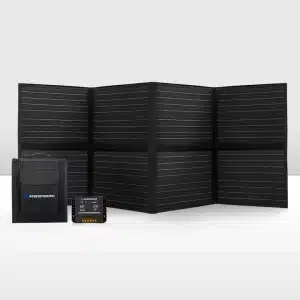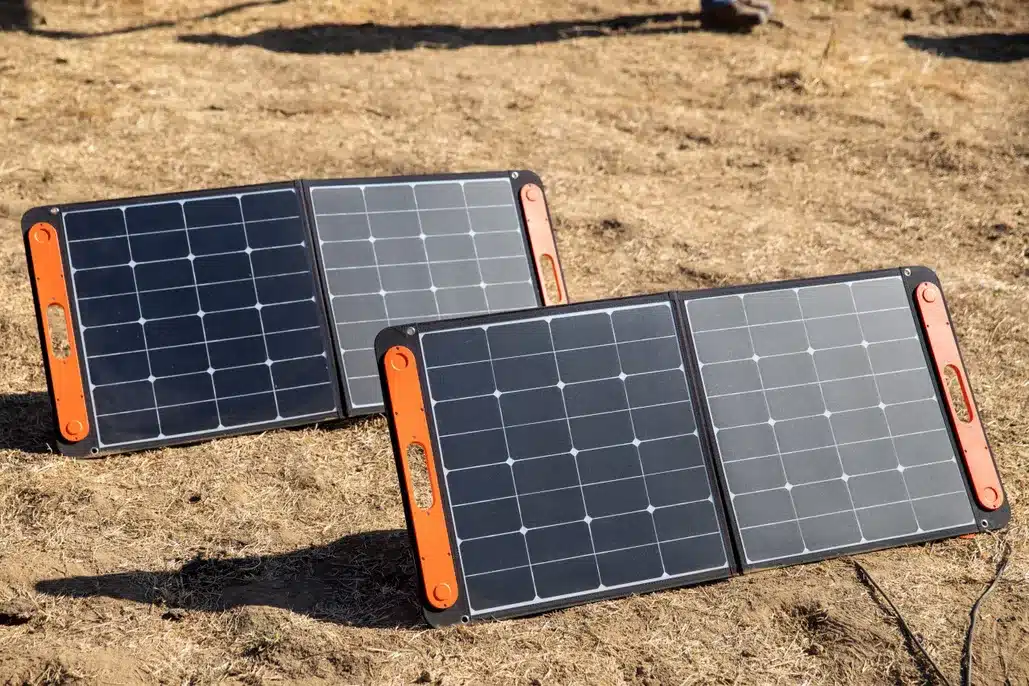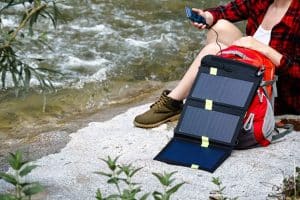An increasing number of electric vehicles (EVs) are on Australia’s roads, which shows that adopting sustainable transportation is widespread in the nation. More EV chargers are also being constructed, and some property owners have installed their own. Yet, nothing beats the convenience of charging your electric vehicle at any time, anywhere. Is this possible?
Many have explored using portable solar panels to charge their vehicles. However, this remains not the most viable option.
Can you really use portable solar panels to charge your EVs?

The simplest answer is yes AND no.
Yes—but it requires patience (a lot of it), a good portable solar panel (or more), and other equipment. Additionally, you can charge your EVs using portable solar panels if you’re not going that far. Still, the charging time will really take a lot of time, and most of the time, you’re better off taking the bus or using a different car to go where you need to.
Still, some people have tried it and a few do it. These two guys from the Netherlands drove to South Africa on solar power.
No, because it’s not efficient. Despite technological advancements that have modernised portable solar panels today, they are only as powerful as the amount of sunlight you get and the size of the solar panel array. If you’re in an area that is mostly shaded or with unfavourable conditions, then you can’t expect to have enough EV power to take you through your trip smoothly. Additionally, it is also dependent on the capacity of your EV battery.
The good news: there are alternatives
A solar generator is a popular alternative if you are persistent in charging your EVs through portable solar panels. Solar generators deliver portable power that can be recharged from the sun. This means you don’t need to store fuel and worry about fumes, noise, and high maintenance costs.
There are various solar power generators today, such as biodiesel and hybrid generators. The hybrid ones are highly recommended because they can use biodiesel as a backup if solar power runs out.
Another alternative is public charging stations. Australia has a growing network of public EV charging stations, especially in major cities and along highways. According to the Q4-2023 Australian Electric Vehicle Public Fast Charger Network Report by Next System, EV charging sites grew by 90% and the total installed capacity grew a staggering 33% in the last three months.
Public charging stations are convenient for charging your battery during errands or road trips. Different stations offer varying charging speeds as well.
You can also explore a home solar panel system with an EV charger. With a rooftop solar panel system, you can generate clean energy to charge your EV at home. Combined with an EV charger, this is the fastest and most cost-effective way to charge your EV regularly.
What makes this alternative even better is that there are government incentives in some states that help offset the initial installation cost. Moreover, upfront costs for a rooftop solar system are becoming more affordable.
There are also now many caravan parks that cater to the growing EV market by offering charging stations for guests. In fact, the Caravan Industry Association of Australia believes the answer to future regional connectivity is via the caravanning industry. They are calling for support in transforming its national caravan network into a fast-charge super network.
Finally, battery swapping stations are a relatively new technology gaining traction worldwide. Instead of charging, you pull into a station and replace your depleted battery with a fully charged one. While this is still limited in Australia, it could become a faster alternative.
Indeed, the future is bright for electric vehicles in the land down under. Solar technology advancements are constantly improving efficiency and affordability. That said, we can expect portable solar panels with higher capacities and foldable designs, making them even more convenient for EV charging.











































